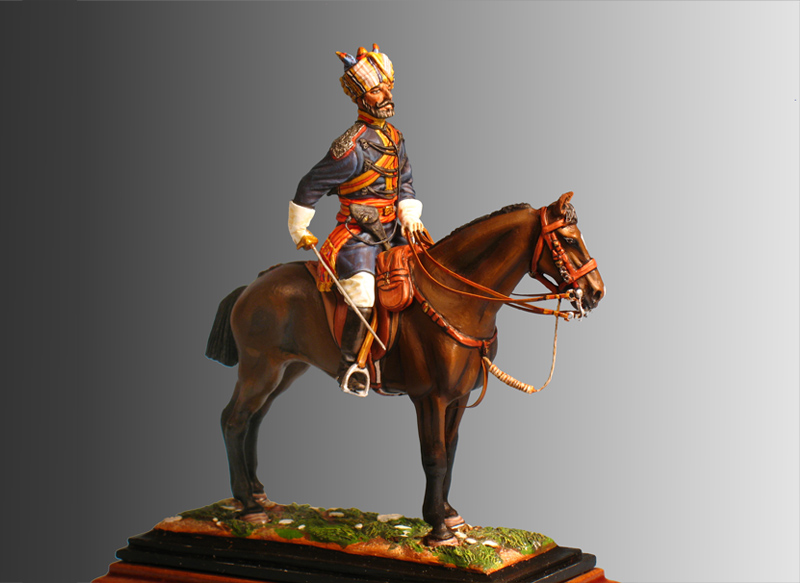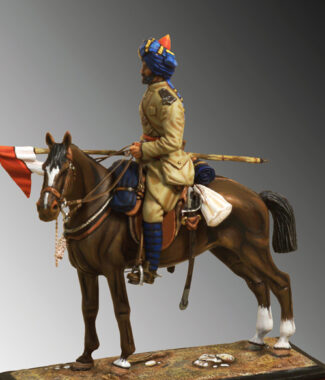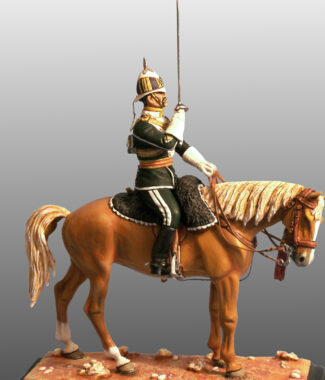After the reform of 1920, it amalgated with the 23rd Rgt. of Cavalry (Frontier Force) forming the:
1921 – 21st/23rd of Cavalry.
1922 – 11th Prince Albert Victor’s Own Cavalry (Frontier Force)
1927 – Prince Albert Victor’s Own Cavalry (11th Frontier Force)
On Partition of India in 1947, the regiment was allotted to Pakistan. In 1956, Pakistan became a republic and all titles pertaining to British royalty were dropped.
1956 – 11th Cavalry (Frontier Force)
Battle Honours before 1903: Deli, Lucknow, Ahmad Khel, Afghanistan 1878-80.
Composition: (1901) Sikhs, Dogras, Pathans and Hindustani Muhammadans.
The 21st Prince Albert Victor’s Own Cavalry (Frontier Force) (Daly’s Horse) was raised as the 1st Punjab Irregular Cavalry by Lieutenant Henry Daly at Peshawar on 18 May 1849. It was one of five regiments of Punjab Cavalry raised to guard the North West Frontier of India, which soon became famous as part of the legendary Punjab Frontier Force or the Piffers (1). Over the next decades, the regiment saw extensive service on the Frontier. During the Indian Mutiny of 1857-58, the regiment operated in North India and took part in the Siege of Delhi and the Relief of Lucknow, where Lieutenant John Watson won the Victoria Cross. During the Second Afghan War of 1878-80, it formed part of Kandahar Field Force and fought in the Battle of Ahmad Khel. In 1890, Prince Albert Victor, eldest child of the Albert Edward Prince of Wales -later King Edward VII- was gazetted as their Colonel-in-Chief, giving his name to the regiment, which has endured to this day. During the First World War, the regiment served in the Mesopotamian Campaign as part of 6th Indian Cavalry Brigade. It fought on the Tigris Front and took part in the capture of Kut al Amara and Baghdad. It also fought in the Actions of Istabulat, Ramadi, Daur and Tikrit. Later it saw service in Kurdistan and took part in the capture of Kirkuk.
The early uniform of the 1st Punjab Cavalry was dark blue with silver lace but by 1870 the blue uniform with red facings and gold lace had been adopted. The figure show a Indian officer in the full dress worn in 1897. He has three loops of black cords across the chest and round the neck black cord for the revolver.
NOTE 1)
They are known as Piffers in reference to the former Punjab Irregular Force (PIF) formed by the British in 1851. The PIF consisted of five cavalry regiments, eleven infantry regiments and five artillery batteries in addition to the Guides Corps. His mission was to maintain order at the Punjab border.








Reviews
There are no reviews yet.